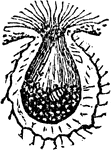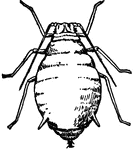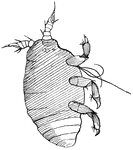Clipart tagged: ‘Aphids’

Wooly Aphid
Eriosoma Tesselata was found on birch in Maryland, in clusters near the ends of twigs, in the autumn.…

Hickory Aphis
A large aphis is found in clusters on the under side of limbs of hickory, oak, and basswood and walnut,…

Fitch
A grape-vine leaf gall-louse. The insect forms galls on the under side of the grape-vine leaves, and…

Apple Plant Louse
The females deposit their eggs, which are small, oval, and black, on twigs and bark in the autumn; the…

Apple Plant Louse
The females deposit their eggs, which are small, oval, and black, on twigs and bark in the autumn; the…

Grape-Root Louse
Phylloxera Vastatrix, a grape-vine-root gall-louse, is by many entomologists supposed to be another…




